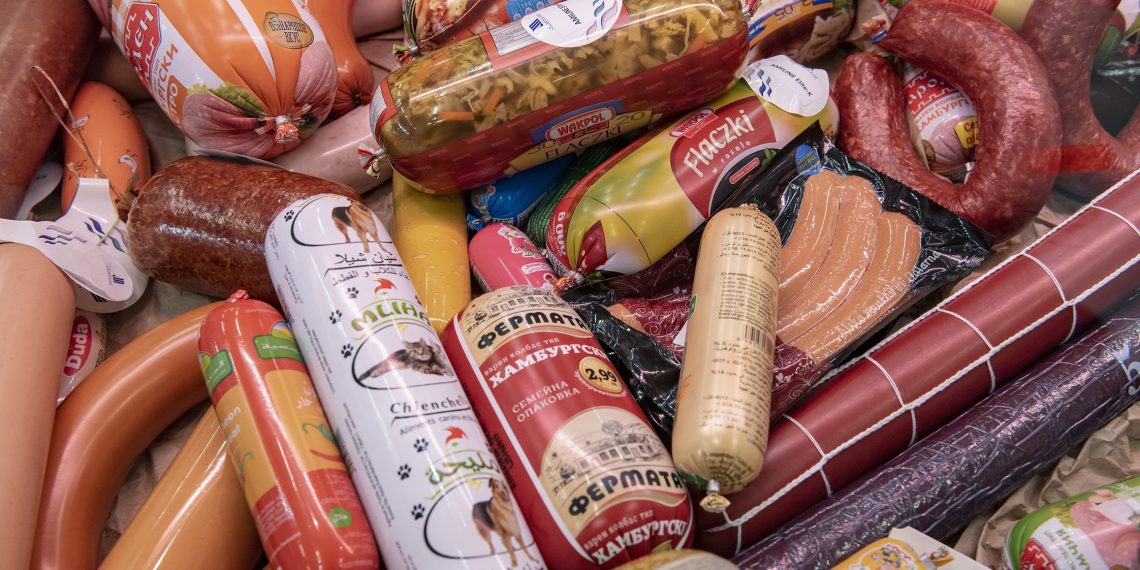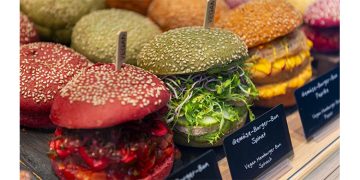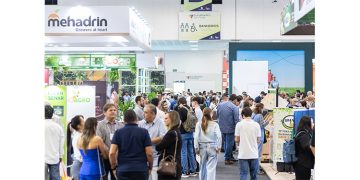The discussion about sustainable production in the meat processing industry essentially concerns issues of environmental protection, health and animal welfare. In connection with climate protection, the high CO2 emissions, the equally high water consumption and the packaging waste produced, which consists mainly of plastic packaging, are the focus of criticism.
The influence of meat consumption on the greenhouse effect is undisputed. In Germany alone, 42.7 million tons of CO2 per year are attributable to meat consumption, in addition to water consumption of 60 trillion liters. The average water footprint per calorie is particularly high for beef, about twenty times higher than for cereals. It is estimated that switching to a diet, low in meat, could result in water savings of 11 to 35 percent. [1]
It is not only since the “Fridays for Future” movement that more and more consumers are questioning their dietary behavior. In addition to environmental aspects, they are particularly concerned about animal welfare. According to a Eurobarometer survey conducted in April 2021, around one-third of Europeans buy and eat less meat, and 16 percent take the carbon footprint of their food into account when shopping and adjust their purchases accordingly. Meat substitutes based on plant proteins as well as vegan and vegetarian alternatives are experiencing a real boom and reflect the trend toward sustainable and animal-friendly foods. [2] IFFA 2022 picks up this trend and will open up to alternative protein sources. In addition to its focus on meat, the trade show will present processing technologies and ingredients for plant based proteins for the first time.
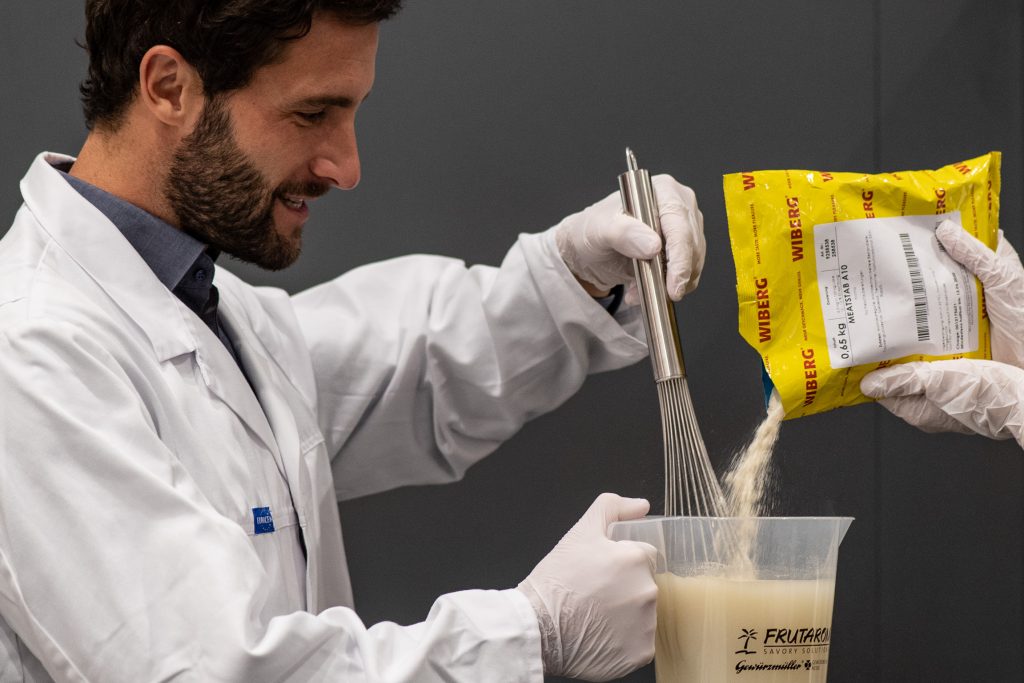 Political directives for more climate protection
Political directives for more climate protection
The discussion about more sustainable food production is also being promoted by political requirements. In its “Green Deal,” which calls for a reduction of greenhouse gas emissions by at least 55 percent by 2030 compared to 1990 levels, the European Union also places an obligation on food producers. In its strategy document “From farm to table” (May 2020), the Commission calls for, among other things, greater energy efficiency, less packaging and the use of innovative and sustainable types of packaging made of reusable materials. [3]
In light of these societal changes and political framework conditions, numerous meat processing companies have integrated guiding principles for sustainable production into their corporate mission statements. Although around 90 percent of meat producers’ emissions result from the supply chain or from the animals themselves, meat processors also see it as their duty to optimize their processes with regard to energy and resource management. Of course, they also have their own interest in this, because saving energy and water not only boosts their image, it also lowers their overall operating costs. [4]
New trends in machinery: resource and energy management
The meat processing industry is one of the high energy-intensive sectors. Heating and cooling food requires large amounts of energy. Cold is needed to chill meat to ensure food safety, among other things. Heat is needed for cooking, steaming, simmering, sterilization and cleaning. In addition, there is water consumption for cleaning and disinfecting manufacturing facilities.
Of course, water must also be heated accordingly. As in many other industries, this is still largely done using fossil fuels. In addition to efforts to increase energy efficiency, switching to renewable energies – and thus reducing the carbon footprint – is therefore another lever for greater sustainability in the meat processing industry.
Energy-efficient refrigeration and heat pump solutions can improve energy efficiency in heating and cooling by up to 70 percent. Waste heat, which would otherwise be wasted, is reused and diverted to other processes such as water and brine heating, drying, cooking, blanching, pickling, pasteurizing, sterilizing, dehydrating and cleaning. To ensure a sustainable cold chain, compressor-based process cooling systems, among others, are used to provide thermally optimal production environments – not only for the food itself, but also for storage and distribution areas. [5]
Savings can also be achieved through modern drive technology, such as servo motors. Energy-efficient, frequency-controlled drives achieve energy savings of up to 25 percent, and switch-on or switch-over current peaks are reduced. In addition, the motors are water-cooled and thus offer the possibility of direct use or recovery of waste heat. [6]
Another step towards sustainability are machines with durable components and modern hygienic design, such as welded and rounded edges and recessed flush covers. They offer less contact surface for dirt and germs, and cleaning requires less water and energy. In addition, cleaning times are shortened by automatic cleaning-in-place (CIP) equipment. [7]
With regard to food safety, the motto for water consumption is: “As much as necessary, as little as possible”. In order to reduce water consumption to a minimum, various options are to be considered, such as recycling wastewater in company-owned or municipal wastewater treatment plants. Innovative monitoring and measuring systems that analyze water consumption and identify parameters for further reduction are also of great help [8]
When it comes to renewable energies, solar thermal energy, heat pumps, biogas or biomass are suitable, since most processes require temperatures below 100 to 120 degrees. With cogeneration, electricity and heat can be efficiently provided from biogas or biomass from residual materials. [9]
The EU is promoting efforts to improve energy management, for example through projects such as ICCEE (“improving cold chain energy efficiency”). The aim of the project is to improve the energy efficiency of the entire cold chain of the food and beverage sector for small and medium-sized companies. For various sectors such as meat or beverages, the Food Testing Institute offers workshops on this. [10]
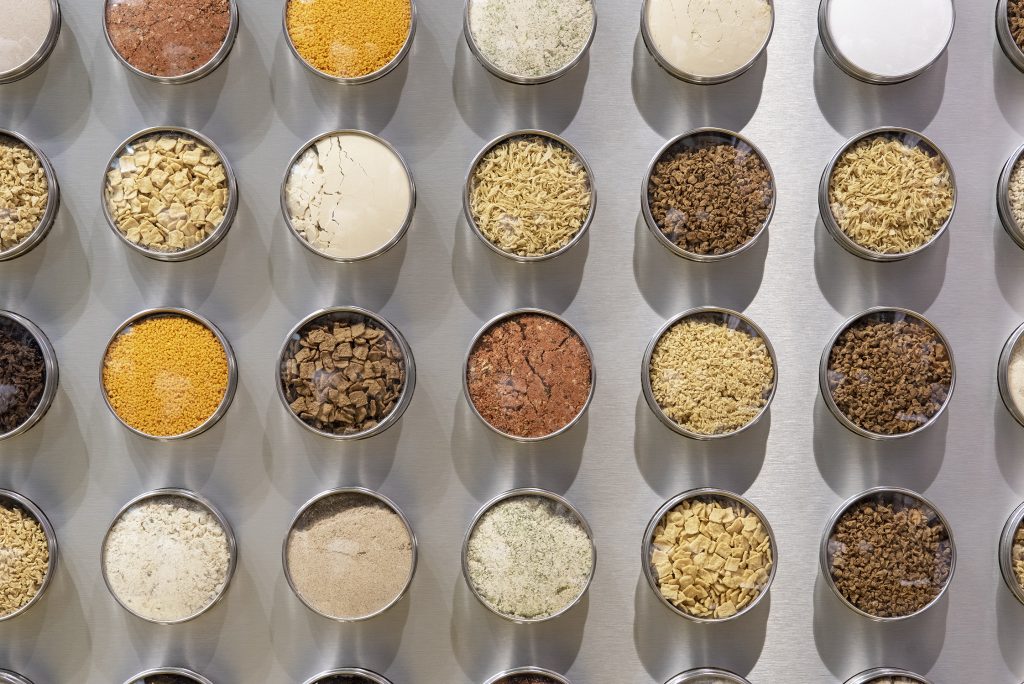 Packaging trends: more than just a cover
Packaging trends: more than just a cover
When it comes to packaging, many consumers no longer reach straight for the shelves, but instead pay attention to sustainable, environmentally friendly solutions. Accordingly, plastic-free and plastic-reduced packaging is a sustainable trend in packaging technology. However, sustainability often counteracts food protection. This is because paper composites or packaging with recycled content allow more oxygen to penetrate, which can impair product quality. This can be remedied by oxygen absorbers, for example based on polymers, which bind the residual oxygen in the packaging and the penetrating oxygen and whose functional layer is integrated in the multilayer structure. [11] In addition to the issue of recyclability, research is focusing on renewable raw materials. Algae -based plastics and transparent films, made from hemp or cardboard made from grass, bio-based packing provides an alternative to plastic made from fossil raw materials. [12]
Another trend: smart packaging that actively takes care of the meat product, protects it and thus has a sustainable effect. It keeps temperatures stable, absorbs unwanted ripening gases and prevents germ infestation. Researchers at the Fraunhofer Institute for Process Engineering and Packaging (IVV) are working on appropriate solutions. This way, not only low-emission technologies and processes, but also material-saving, recyclable and smart packaging will contribute to climate-neutral production. [13]
From May 14 to 19, 2022, IFFA, the Leading International Trade Fair – Technology for Meat and Alternative Proteins, will open its doors in Frankfurt am Main. Internationally renown companies will present their latest technologies and provide information on the most important trends and developments in the meat and protein processing industry.
One of the top topics at IFFA is sustainability: the EU wants to become climate-neutral by 2050, which also poses major challenges for the meat and protein processing industry as well as the packaging industry. They must improve their energy efficiency and produce in a way that contributes to the conservation of the world’s natural resources.
[1] https://www.boell.de/sites/default/files/2021-01/Fleischatlas2021_0.pdf
[3] https://ec.europa.eu/commission/presscorner/detail/en/ip_21_3156
https://eur-lex.europa.eu/legal-content/DE/TXT/?qid=1590404602495&uri=CELEX%3A52020DC0381
[4] https://www.boell.de/sites/default/files/2021-01/Fleischatlas2021_0.pdf
[5] https://www.gea.com/de/articles/sens/index.jsp
[6] https://www.handtmann.de/fuell-und-portioniersysteme/ueber-uns/nachhaltigkeit
[8] https://www.fokus-fleisch.de/fleischwirtschaft-energie-wasser
[10] https://iccee.eu/




